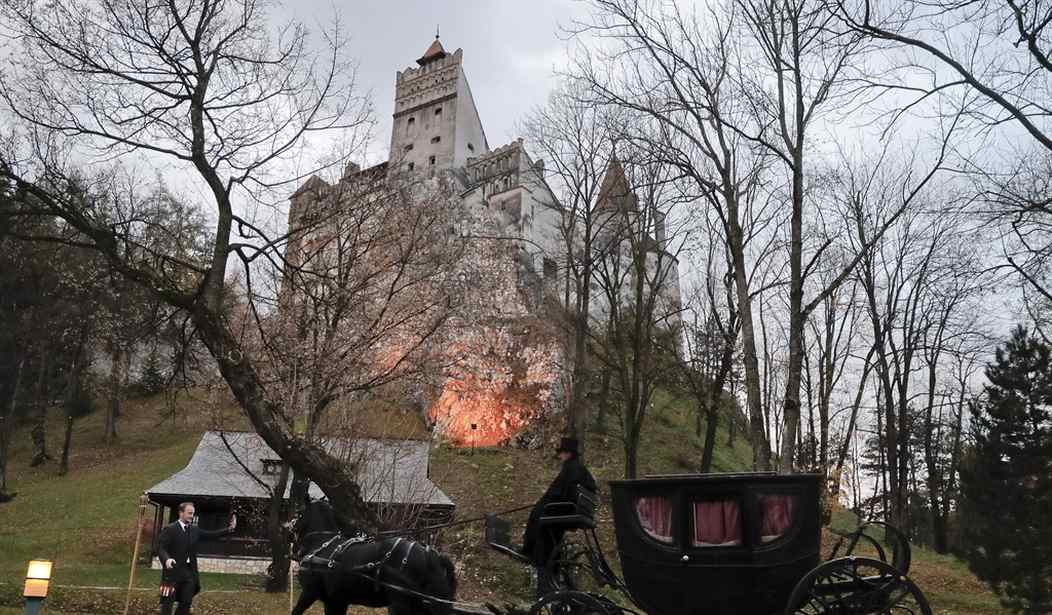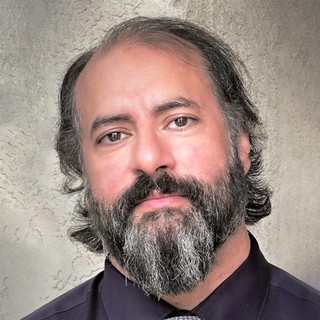Did you know that the archfiend best representing the Halloween season — namely, Count Dracula — is fake news?
I don’t mean that he’s fake in the sense that he’s fictional — which, of course, he is — but rather that his entire genesis is grounded in a pattern we now recognize and see on a daily basis: leftist propagandistic forces working to transform heroes into villains.
Count Dracula entered the popular consciousness in 1897, with the publication of Bram Stoker’s novel, "Dracula," which surrounds the exploits of an undead bloodsucker from Romania. As many novelists do, Stoker tried to give his story an aura of historic legitimacy by connecting it to real people and events. For his novel’s namesake, Stoker found a real Romanian, Vlad III Dracula (c. 1430-1476), also known as Vlad the Impaler.
Although the contemporary historical records Stoker relied on did not portray Dracula as a denizen of the night, fluttering about in the darkness in search of his latest victim (before retiring for the day inside a coffin), they did portray him as a sadist who tortured and impaled his victims.
Among other depravities, these accounts say that Vlad boiled people alive, shredded others “like cabbage,” forced parents to eat their children and husbands to eat their wives’ breasts, forced Muslim Tatars to swallow their own semen, and built secret trapdoors to drop his victims on cunningly located stakes below.
Most historians today reject these accounts and see them for what they were: enemy propaganda meant to demonize and take down Dracula. (Johannes Gutenberg had only recently invented the movable-type printing press, and Vlad’s enemies made great use of it to propagandize his alleged atrocities.)
That said and to be sure, by today’s standards, Vlad III Dracula was immensely cruel and regularly impaled his enemies.
He also had something of a “dark” sense of humor. When Turkish envoys refused to remove their turbans in his presence, arguing that it was Muslim “custom and law” that they keep their heads under wraps, Dracula replied, “And I shall uphold your law, so that you adhere to it firmly.” He then had their turbans fastened tightly around their heads with little iron nails. As he dismissed the brain-hemorrhaged emissaries, he commanded them to tell their master, Sultan Muhammad II, the feared conqueror of Constantinople, not to “send his customs to other lords, who don’t want them, but let him keep them [to] himself.”
Despite all this, it’s what is left out — the all-important context, which fake news thrives on omitting — that invalidates the overall depiction of Vlad. Just as Americans today are regularly hammered about their ancestors’ role in slavery — without ever being told that everyone engaged in slavery, and often on a much worse scale than Americans — virtually everyone of Dracula’s era was by today’s standards cruel, and impalement was a standard form of execution.
Also left out is that Vlad was first exposed to savagery in his youth when he was a prisoner of the Turks, who regularly tortured and impaled their victims (and turned his younger brother and fellow prisoner into a catamite). In his adult years, he learned to fight fire with fire — not least because he was vastly outnumbered and disadvantaged — terrorizing and impaling his Ottoman enemies no less than they had done to his people. Even the contemporary claim that he dined around his impaled victims was a tradition begun by Sultan Murad II, his captor, who ordered tables set and a feast held among the corpses of his Christian enemies following the battle of Varna,1444.
It’s especially in the context of religion — both Christianity and Islam — that fake news, or rather fake history, excels. Just as the “narrative-shapers,” chief among them Hollywood, have either eliminated or whitewashed Islam’s negative role in shaping Vlad, so too have they eliminated or demonized his Christian background as fueling his cruelty.
Count Dracula was actually a committed Christian and saw his Just War against the invading Turks as being first and foremost about defending Christendom from Islam. Far from blaspheming and turning against God following his first wife’s death — as dramatically portrayed in the opening scene of "Bram Stoker’s Dracula" (1992) — Vlad regularly visited, sponsored, and spent his free time in Orthodox monasteries, and even sent donations to Mount Athos.
Perhaps the "Chronicle of Efrosin," which appeared less than a decade after Dracula’s death, best captures his character. It depicts a man with a severe persona who meted out terrifying punishments for those who dared transgress especially moral laws. According to the chronicle, “he hated stealing so violently in his country that anyone who caused any evil or robbery, or a lie or an injustice, did not live long. Be he an important boyar, priest, or monk, or an ordinary person, be he the richest man, he would not escape death. So feared he was.”
Above all, Vlad is remembered as a fierce warrior who terrorized the 150,000 jihadists who invaded his homeland in 1462. Vastly outnumbered, he took some 4,000 horsemen and violently blitzed into the Ottoman camp on a pitch-black night to cut the head off this vast Islamic snake by assassinating its sultan, Muhammad II.
According to the testimony of one of Vlad’s riders, “moving as quick as lightning in all directions,” the Impaler “butchered large numbers of Turks” during his mad hunt for Muhammad. In the darkness and din of war, the sultan, startled and confused like the rest, “fled from the camp” in a panic. This midnight visitation of horror lasted for six hours, with countless Turks slain, and ended just before dawn. It was only then, when Vlad had withdrawn to his mountain stronghold, that the sultan was “brought back almost by force.” As for Vlad, “No one dared pursue him, since he had caused such terror and turmoil.”
The movie "Dracula Untold" (2014) portrays this night raid supernaturally, with Vlad turning into a black cloud of bats. A contemporary account by the enemy Turks is the source of this rendering: "On a dark night, his heart full of wickedness and accompanied by his Infidel army, he [Vlad] flew like a black cloud toward the army of the wise Sultan, attacking him."
Much more can be and has been said about Vlad III Dracula — Chapter 8 of my book, "Defenders of the West: The Christian Heroes Who Stood Against Islam" is dedicated to him — but the point should be clear.
Related: When Christendom Learned to Fight Fire with Fire
Before the world learned about fake news, there was fake history, and its goal was always the same: to demonize Western elements by exaggerating and stripping them of context and, above all, expunging or demonizing their Christian aspects while leaving aggressive Islam out of the equation.
Little wonder that, whereas Dracula is a bloodsucking fiend in the West, in his native Romania he remains a hero. Until now, whenever there is talk of corruption or immorality, it is common for Romanians to resignedly end the conversation by quoting the following lines of an old poem: “Where art thou, old prince, Vlad, on them all to lay thy hands.”
And so, on this Halloween, you can remember Count Dracula not as a fiendish vampire but as a fallible man who, like so many Europeans before him, did what he could, fighting fire with fire, to keep his tiny Christian kingdom safe from Muslim invaders.
All historic quotes in this article were excerpted from and are documented in the author’s "Defenders of the West."










Join the conversation as a VIP Member